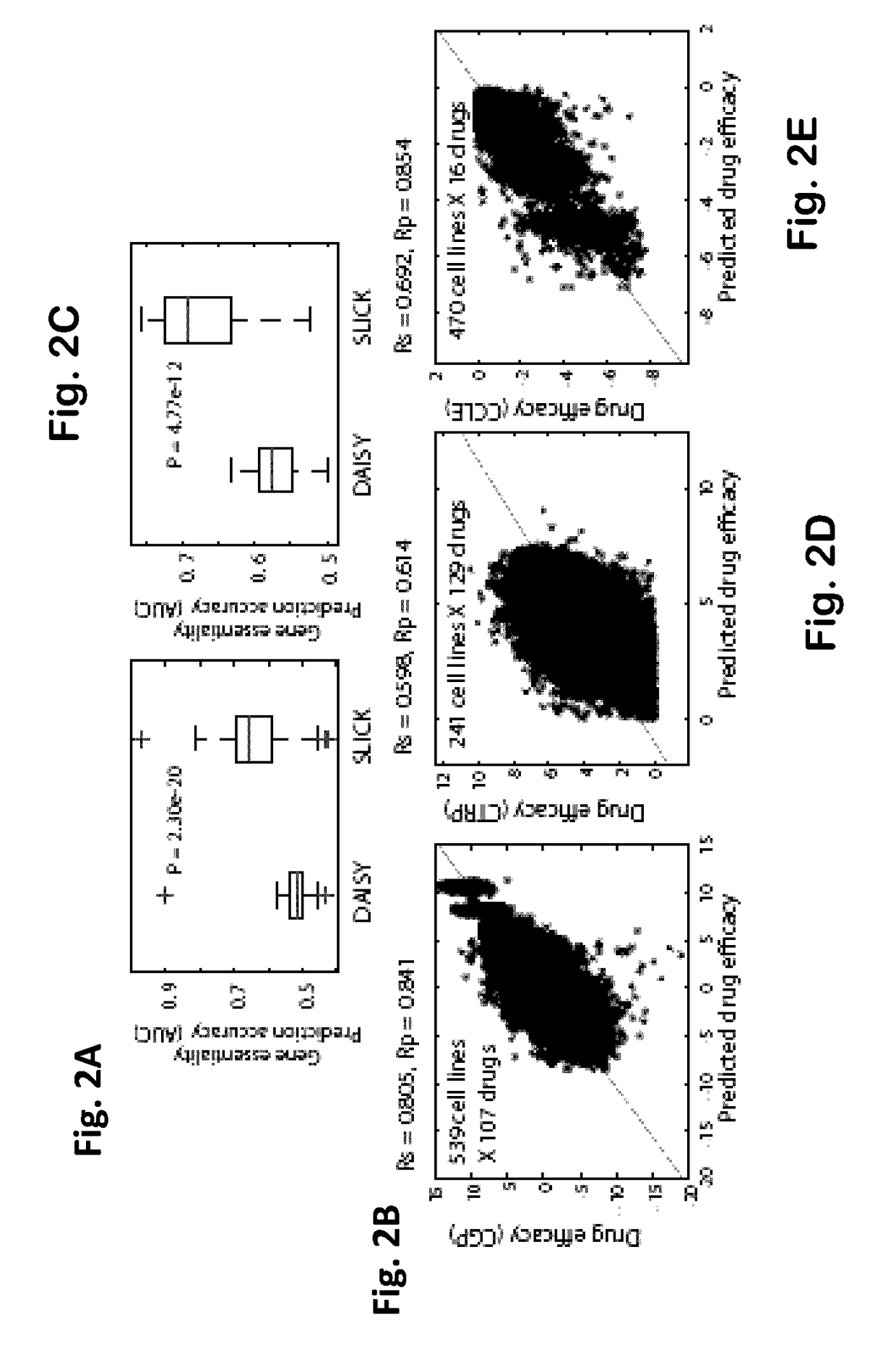Clinically relevant synthetic lethality based method and system for cancer prognosis and therapy
a cancer prognosis and therapy technology, applied in the field of bioinformatics, cancer research, personalized medicine, cancer drug development, can solve the problem of more lethal inhibition and other problems, and achieve the effect of increasing the progression free survival of a subject, preventing or inhibiting the development of metastasis, and increasing the duration of response of a subject having
- Summary
- Abstract
- Description
- Claims
- Application Information
AI Technical Summary
Benefits of technology
Problems solved by technology
Method used
Image
Examples
example 1
SLICK to Construct the Clinical-SL-Network
[0186]Constructing the Protein-Coding Network.
[0187]The first step of p-values assignment was performed based on 19 datasets consisting of the SCNA, gene expression, somatic mutation profiles, and survival data of overall 4,764 clinical samples, spanning four cancer types: kidney renal clear cell carcinoma (506), ovarian serous cystadenocarcinoma (826), lung squamous cell carcinoma (448), and breast invasive carcinoma (2,984). The second step of network pruning and optimization was applied based on the gene expression, survival rates, and treatment information that was available for 1,471 TCGA cancer patients, spanning 23 cancer types, and overall 58 drugs. Nine out of these 58 drugs were given to more than 100 patients.
[0188]Constructing the miRNA Network.
[0189]SLICK was applied to identify the SLi of the form
miRNA->SLprotein-coding
gene. The first step of p-values assignment was performed based on 15 datasets consisting of the SCNA, miRN...
example 2
cal SL-Network Predicts In-Vitro Gene Essentiality and Drug Response
[0208]It was previously shown that an SL-network can be applied to predict gene essentiality in cancer cell lines30. This is done by first analyzing the gene expression and SCNA profiles of the cancer cell line to identify inactive genes. The SL-essentiality-level of a gene in a given cell line is then defined as the number of inactive SL-partners this gene has in the pertaining cancer cell line according to the network30. The clinical-SL-network was applied to predict gene essentiality in 129 cancer cell lines and the predictions were examined based on two gene essentiality screens37,38. The clinical-SL-network obtained highly accurate predictions and outperformed the SL-network constructed by DAISY (FIGS. 2A and 2C, Wilcoxon rank-sum test p-value of 1.706e-28).
[0209]The clinical-SL-network was then applied to predict drug response in cancer cell lines. The sensitivity of a cell line to a given drug is predicted as...
example 3
tally Testing the Clinical SL-Network as a Drug Repurposing Platform
[0211]An experimental screen was designed for testing whether the clinical SL-network can discriminate between cytotoxic and non-cytotoxic drugs, when considering a wide range of oncology and non-oncology drugs. Transcriptomic profiles of an oral cancer cell line under normoxia and hypoxia were obtained. Based on these profiles the network predicted the cell line response to 139 oncology and 531 non-oncology drugs in each condition. Then the predictions were proceeded to experimentally test by administering each of these 670 drugs at a concentration of 10 μM to the cells under hypoxia and normoxia.
[0212]The predicted efficacies of the drugs matched the experimental findings: AUC=0.811 and 0.760, Wilcoxon ranksum p-values of 2.11e-22 and 7.29e-33, when defining drugs with more than 90% or 50% Growth Inhibition (GI) as effective, respectively (FIGS. 3A-3B). One of the most lethal repurposing candidate drugs according ...
PUM
| Property | Measurement | Unit |
|---|---|---|
| strength | aaaaa | aaaaa |
| weight | aaaaa | aaaaa |
| drug resistance | aaaaa | aaaaa |
Abstract
Description
Claims
Application Information
 Login to View More
Login to View More - R&D
- Intellectual Property
- Life Sciences
- Materials
- Tech Scout
- Unparalleled Data Quality
- Higher Quality Content
- 60% Fewer Hallucinations
Browse by: Latest US Patents, China's latest patents, Technical Efficacy Thesaurus, Application Domain, Technology Topic, Popular Technical Reports.
© 2025 PatSnap. All rights reserved.Legal|Privacy policy|Modern Slavery Act Transparency Statement|Sitemap|About US| Contact US: help@patsnap.com



